The junta’s military changed its tactics in August from offensive to defensive in several resistance strongholds amid an increase in attacks in ethnic areas and other resistance strongholds.
But by the end of the month it admitted that even its capital it now under threat.
People’s Defense Forces (PDFs)—the armed wings of the civilian National Unity Government (NUG)—and ethnic armed organizations (EAOs) across the country are on the offensive in all but Rakhine State.
In August, the junta deployed massive numbers of troops in Kachin, Shan and Kayah states in an attempt to regain territory lost to EAOs and resistance forces. At the same time, it had to repel escalating attacks in Chin and Mon states.
In Sagaing and Magwe regions, junta troops responded to daily resistance attacks with atrocities, including extrajudicial killings, looting and incinerating villages, shelling civilian targets, and rape.
August delivered even more insecurity to the junta as the NUG and the country’s oldest ethnic revolutionary group, the Karen National Union (KNU), jointly increased attacks in eastern Bago Region, threatening Naypyitaw.
Except for Rakhine State—where the ethnic Arakan Army agreed to a temporary ceasefire with the junta—near-daily anti-junta resistance attacks have been reported in all the rest of Myanmar’s 13 states and regions throughout August.
The junta is struggling to defeat the resistance because it has to focus on multiple front lines across the country, analysts say.
Losing ground in Kayah State
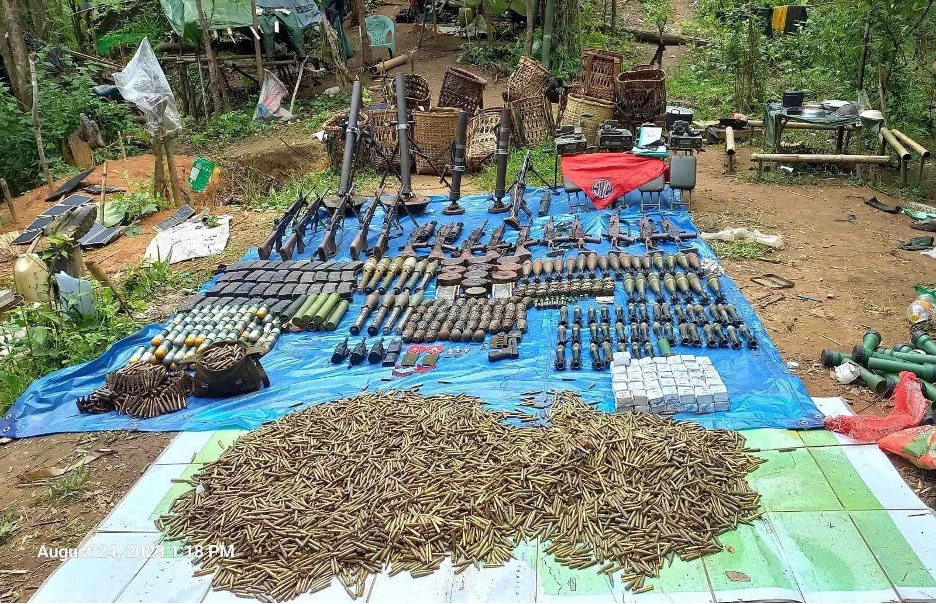
A series of intense clashes between the junta forces and Karenni resistance groups lasted from August 2 to 15 as a large numbers of regime forces tried to regain lost ground along the Demoso-Hpruso Highway.
About 70 junta troops—including a commander and deputy commander from two battalions— were killed and a large amount of weapons and ammunition were seized by resistance groups from August 10 to 12, according to the Karenni Nationalities Defense Force (KNDF).
The junta retaliated with airstrikes and drone attacks on civilian targets along the highway in Hpruso Township.
Since July, fierce fighting has broken out in the state’s Hpasawng Township after a large number of junta troops began attempting—but so far have failed—to retake military bases and the Myanmar-Thai border town of Mase from the Karenni resistance groups that seized them.
Clashes intensify in Kachin State
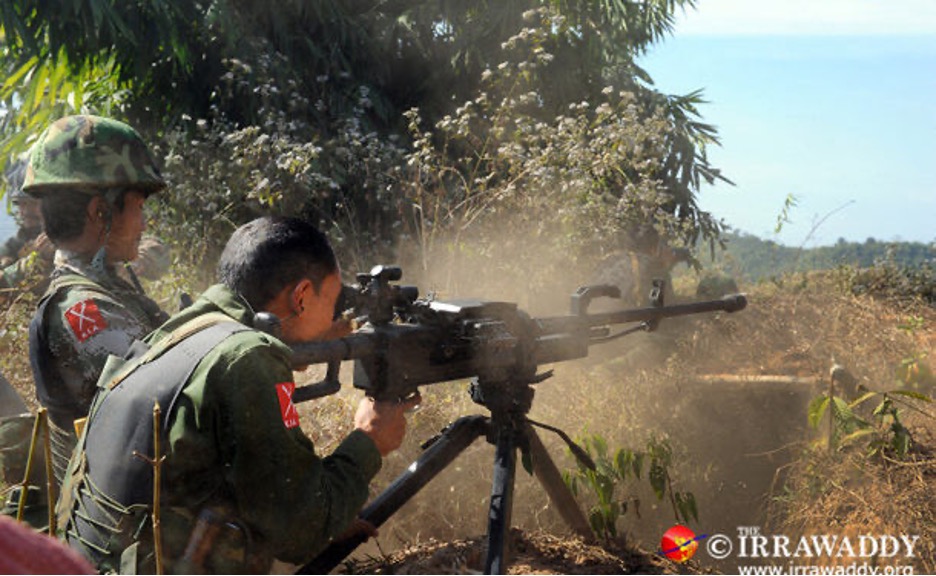
After one month of intense clashes along the Myitkyina-Bhamo Highway in Kachin State, the junta sent a massive number of reinforcements in August to attack the headquarters of the Kachin Independence Army (KIA) in Laiza Town on the border with China.
Fighting erupted along the highway and near Nam San Yang Village, about 20 kilometers from Laiza Town, in July. About 1,000 junta troops have been deployed to the area. Still, even at the end of August, they were unable to penetrate into KIA bases as the ethnic army’s troops kept control of mountainous areas.
On August 27, the junta conducted airstrikes after being defeated by KIA troops near Nam San Yang village in two days of fighting, according to local media reports.
The junta sent reinforcements and ammunition to Bhamo from Mandalay via a flotilla of nine vessels in August.
In the second week of the month, the KIA took control of junta bases after attacks on four junta outposts in Kachin’s Hpakant Township. Clashes were also reported in northern Shan State as junta troops attempted to enter KIA-controlled territory.
Clashes intensify in northern Shan State
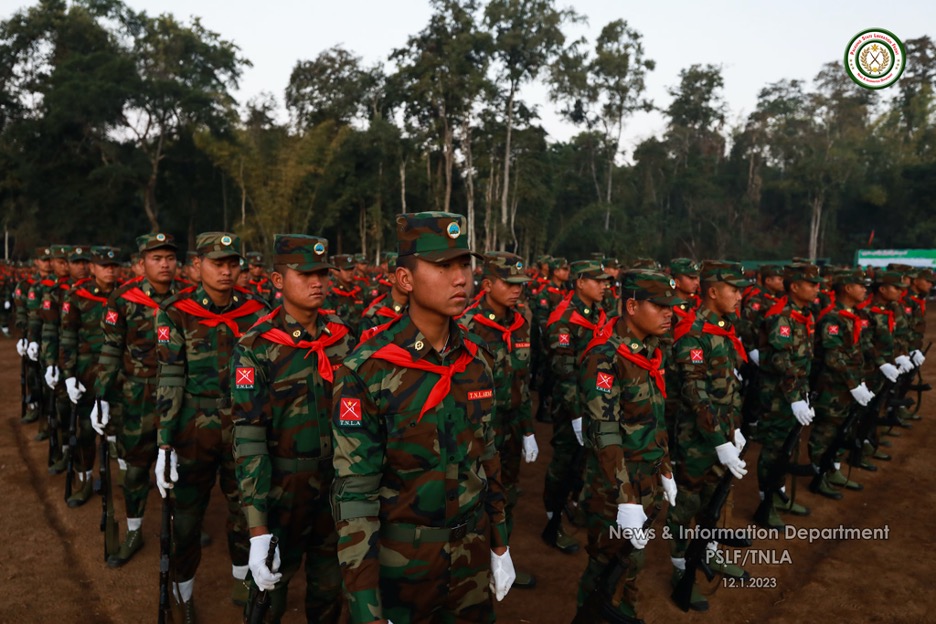
There were 17 clashes between the Ta’ang National Liberation Army (TNLA) and junta troops in northern Shan State between July 26 and August 29, according to the TNLA. The fighting intensified as junta troops attempted to regain territory now held by the TNLA in Muse and Kutkai townships.
In late August, heavy clashes broke out in Muse Township for two days when five military columns attempted to occupy TNLA-controlled territory near the border with China.
Clashes were also reported in nearby Kutkai Township as the junta sent troops to areas under the control of the ethnic armed group.
Amid peace-talk meetings the Shan State Army (SSA), the armed wing of Shan State Progressive Party, fighting erupted after the junta launched an offensive on an SSA base in August. In response, the SSA attacked regime troops and a junta base in the Laikho Township.
After suffering heavy losses, the junta gave up its attempts to retake territory from the SSA.
Chin resistance ‘on the offensive’
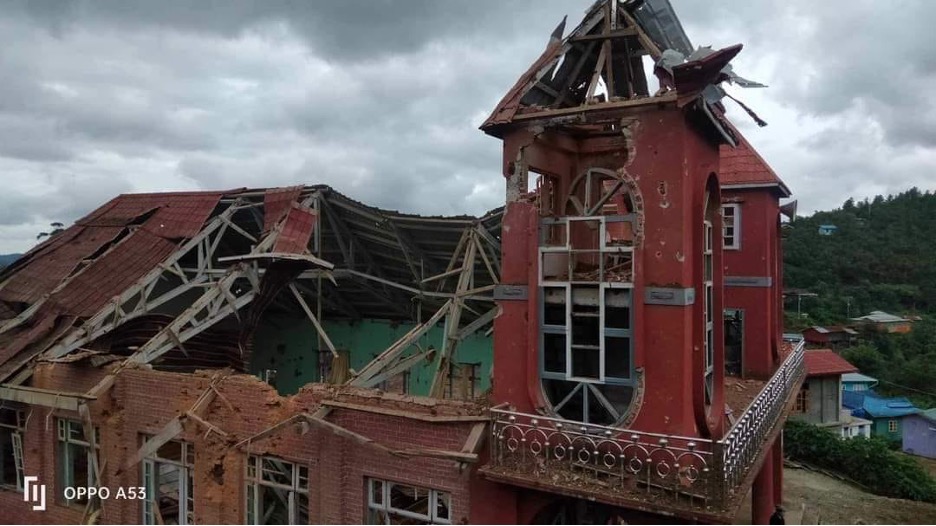
The junta has lost control of most of Chin State. It is, for the most part, confined to towns in the western state. In August, however, it faced escalating attacks from Chin resistance groups targeting its bases in and around towns.
On Monday, a 10-hour battle broke out near the mountaintop town Thantlang when at least four Chin resistance groups—including the Chin National Army (CNA), the armed wing of the Chin National Front (CNF)—raided three junta bases in the town as well as the junta’s main base on a nearby hilltop simultaneously.
The junta was required to use airstrikes and artillery shelling to protect its bases. Although the Chin resistance groups failed to take the junta bases, they said about 30 junta soldiers were killed and many weapons were seized during the battle. Fifteen ethnic Chin resistance fighters were also killed and more than 10 others were wounded in the coordinated attacks.
Resistance forces are on the offensive in the state, CNF spokesperson Salai Htet Ni told The Irrawaddy.
On August 14, the resistance groups also took a junta outpost in the Thantlang Township, seizing two soldiers as well as a cache of weapons. The junta responded with airstrikes on a nearby village, destroying a church and civilian homes.
Joint Chin resistance groups, including the CNA, also seized a junta arsenal during a raid on the headquarters of Infantry Battalion 268 at Falam Town on August 12.
Just hours after the raid, the junta responded by bombing Ramthlo Village, about 35km south of Falam Town, destroying homes and a church.
Plain troubles
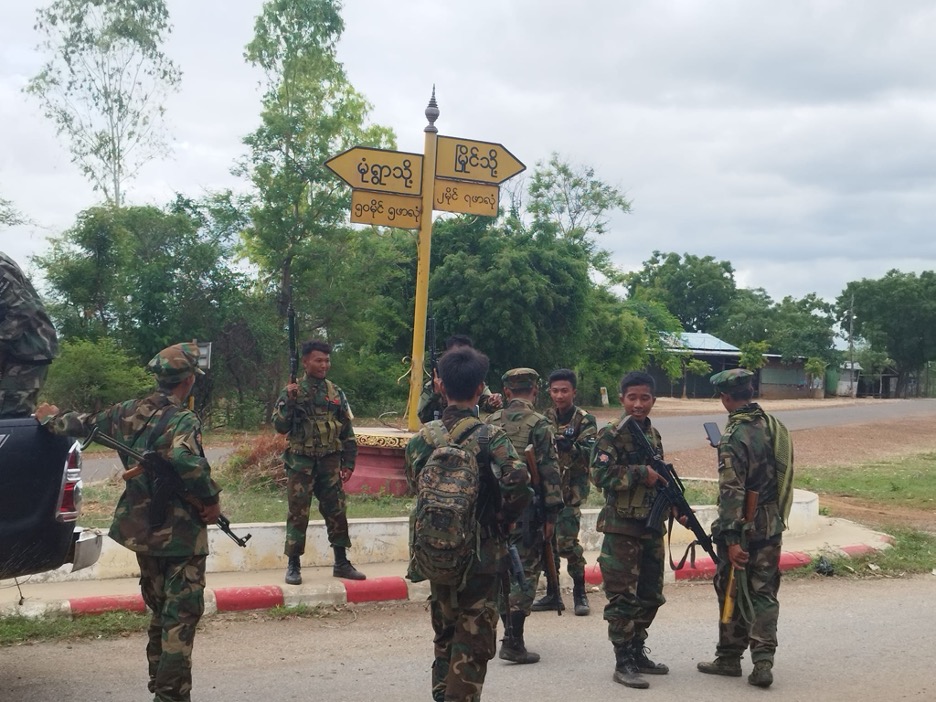
The military junta has lost control of almost all of Sagaing Region and many townships in Magwe and Mandalay regions—Myanmar’s plains—after relentless daily attacks, land-mine ambushes, drone strikes, shelling, and hit-and-run attacks from resistance groups.
Most roads in Sagaing and Magwe regions are controlled by local resistance groups, including PDFs, while junta assets—police stations, military bases, checkpoints and township general administration department offices—are being hit by drone strikes, raids and shelling daily.
Resistance groups that control the northern part of Magwe Region increased attacks on regime targets in the region’s south, particularly Natmauk and Myothit townships, in August.
In third week of the month, resistance groups attacked junta troops near the border of Magwe’s Myothi and Tatkon townships—near Naypyitaw.
An analyst summed up the situation for The Irrawaddy, saying: The junta is no longer able to defeat resistance forces there, so its troops can only raid and torch villages.
Conflicts in the south
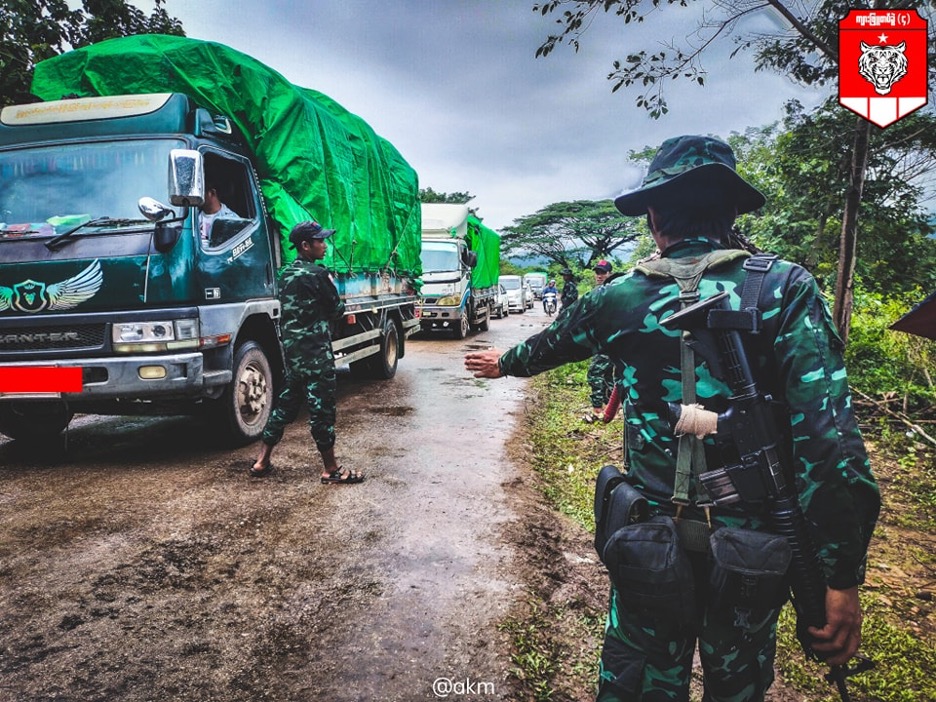
The junta lost control of more territory in some townships in Tanintharyi Region in August, as several resistance groups—including the Karen National Liberation Army (KNLA), the armed wing of the country’s oldest ethnic revolutionary group, the Karen National Union (KNU)—asserted control.
As the regime launched a heavy offensive to retake its strategic mountaintop base on the Lat Khat Taung Mountain in Karen State’s Myawaddy Township, resistance forces attacked junta bases in Myawaddy, Kawkareik and Kyainseikgyi townships in August.
On August 15, the junta launched an intense offensive using a large number of troops supported by airstrikes and artillery, to recapture its mountaintop base, which was seized on July 21 by resistance groups and the KNLA.
It failed and suffered heavy losses.
Resistance fighters and KNLA troops now conduct security checks on vehicles on the main highways in Karen and Mon states.
Losing control in eastern Bago
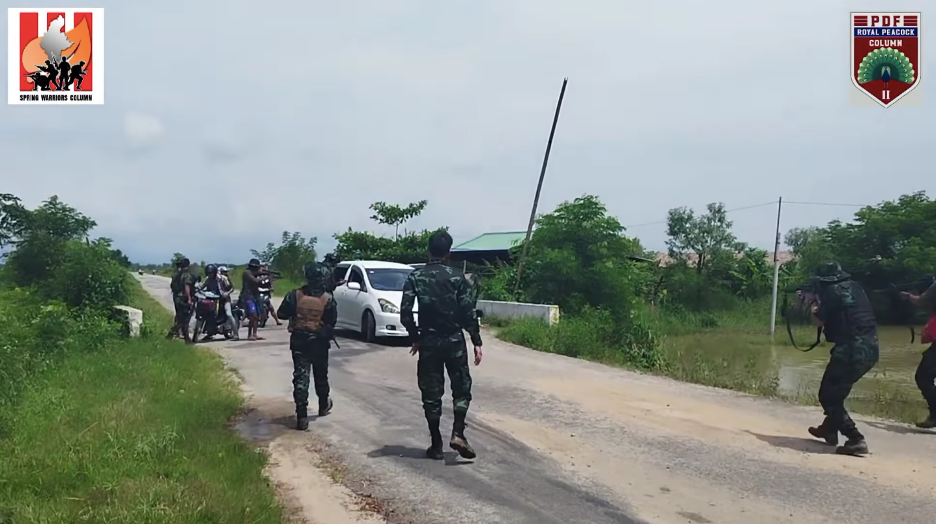
The junta is increasingly losing control in the eastern Bago, just miles from Naypyitaw as coordinated attacks by the KNU and PDFs have escalated. They now control several townships in eastern Bago.
The attacks are also threatening the junta’s main logistics routes—both the Yangon-Mandalay new expressway and old highway, as well as the Yangon-Mandalay railway—that connects its administrative capital to the rest of the country.
In mid-August, a military logistics train overturned after an ambush in Bago Region’s Pyuu Township. It was travelling from Naypyitaw to Yangon.
After suffering numerous combat defeats, military bases in eastern Bago frequently shell nearby villages, causing civilian casualties and destroying homes, according to the KNU.
KNLA Brigadier General Saw Tamlar Thaw told the media on August 10 that the junta is increasingly focused on defense rather than attacks. Rising resistance attacks have taken a toll.
“The junta is unable to conduct offensives now. Instead, it conducts shelling and airstrikes on civilian targets,” he said.
Unnerving the regime
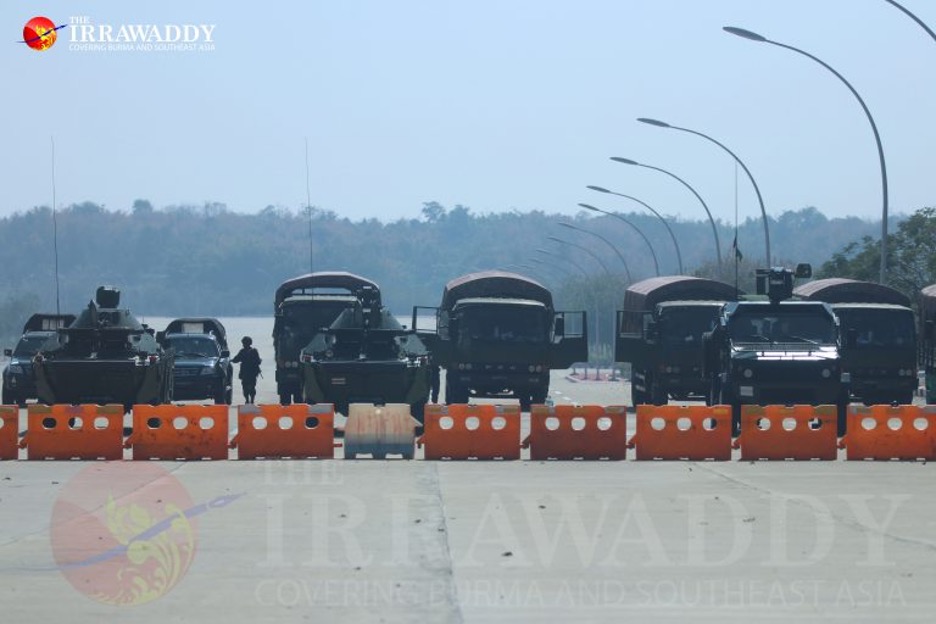
Many resistance attacks were reported near the capital Naypyitaw, directly threatening the military regime’s nerve center, in August.
Some of the attacks occurred within an hour’s drive of the capital. On August 20, combined resistance groups ambushed a military unit near the border of Naypyitaw’s Tatkon Township and Magwe’s Myothit Township.
A series of clashes also broke out on a mountain in Pyinmana Township, in eastern Naypyitaw—about 40km from the city center—from August 10 to 14. Resistance groups seized a junta outpost and attacked junta reinforcements.
Clashes were also reported in Yedashe Township, in eastern Bago Region, about 90km south of the capital.
The attacks aim to penetrate Naypyitaw, resistance groups said.
The attacks seem to be paying off.
Junta officials attempted to rally local support in Naypyitaw earlier this week, warning residents to report any information about PDFs to them in advance.
They warned residents that resistance forces could attack Naypyitaw at any time.

















